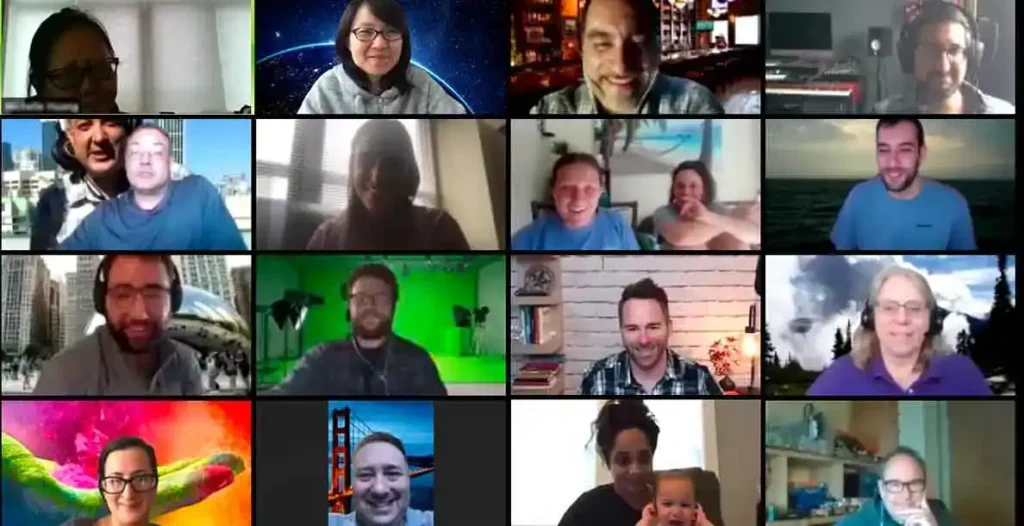The global pandemic created by the novel coronavirus has ushered in a new reality for businesses. After spending time tracking how companies are dealing with the crisis, we found three main themes of work emerging:
- Work is Digital: Teams who invested in automation and online reviews and approvals made the switch with minimal fuss
- Work is Disparate: Workers are distributed—meaning face-to-face, even ad hoc, discussion is more difficult, which is requiring new ways of designing processes and creating accountability and transparency
- Work is Demanding: Faced with challenging, global events, ever-increasing competition means businesses must demand that work continue at or above pre-event productivity levels
Before February 2020, you probably heard these themes in futurist talks at conferences or read about them in maverick research from advisory firms like Gartner and Forrester. And generally, the timeline was further out in the future—like 2025 further out.
Of course, all of that has changed and the future of work is here a lot faster than we imagined.
Work is Digital
Note the emphasis on “work” instead of “marketing.” CMOs have already doubled down on digital channels as consumer preferences have shifted towards digital engagement and digital commerce.
But here I am talking about the reality that what we use to communicate, what we use to move work forward, and what we use as our system of record is digital. The marketing teams that have already made these investments are sailing through the most disruptive part of this current market turn. Why? Because they weren’t reliant on in-person meetings or face-to-face meetings to decide a next step; they had the vision to design processes and digitize them for sustainability.
On the other hand, the majority of teams that haven’t made the switch to digital, are continuing to experience challenges. According to a 2019 survey done by the Content Marketing Institute, 65% of respondents said that that their biggest expected strategic content management challenge will be communication between various teams.
Fortunately for marketing, it has led the way in cloud-based business application development, and it’s a big reason why Marketing Technology makes up almost 1/3 of the average marketing budget. Lately the concept of the cloud has been taken for granted but the abruptness of change we’re all experiencing highlights why marketing as a function should be applauded for making the technology move that has now proven to make it more resilient to sudden changes.
Workers are Disparate
By now virtually all marketers are working from home, so their only way to communicate is with collaboration tools. It also means that workers personal lives are now 100% intertwined with work such that you’re not planning for a workflow, but a lifeflow. That said the three unanswered needs that will help make an enterprise frictionless remain in place:
- Collaboration across teams
- Deeper operational insights to optimize return-on-effort (ROE)
- Automation to get work done as quickly as possible
Some of the things that we thrive on as creatives, such as in-person brainstorms, ad hoc conversations, and the general personal connections we build with our teams are not available right now in the way we’ve always known. But that doesn’t mean they can’t be solved for with new technology like video conferencing.
If you’re planning for how to solve for a time when your workforce has become increasingly disparate, here’s a key question for you: In the midst of business disruption, what would it mean to your business if you could get to market faster than your competition without burning out your teams?
The answer to that is the future of modern work: work management solutions. Work management solutions can support you if you’re all sitting next to each other or disparate. And now that everyone is forced to be disparate, you have a new challenge in keeping everyone aligned. Technology designed to solve for the future of marketing work will help you actively take measures that stem the growth of ‘organizational drift.’
Work is (Still) Demanding
By the way, something I’m quick to empathize with my fellow marketers about is the reality that marketing is still hard! Even though teams are 100% remote, marketing still has to deliver outputs on time with multiple teams providing input (often from outside of marketing), all needing to be aligned with a complexity mix of channels—an average of 23 different channels, actually. It’s all a lot.
Lucky for marketers everywhere, the new way of working is trending towards Agile Marketing. In the 2020 State of Agile Marketing, Aprimo teamed up with AgileSherpas and learned that Agile teams are far more satisfied with their teams and their results than are traditional marketers and ad hoc marketers—those who operate without a long-term plan.
The reasons for their cheerfulness are clear. Agile marketers report the following benefits:
- Improved productivity
- Enhanced ability to manage changing priorities
- Increased innovation
Adopting Agile seems obvious, but talk to anyone that’s been down the path, and it’s clear you can’t just take the methodologies off the shelf and implement them. You first need a flexible core technology that lets you facilitate collaboration because the best practice marketing efforts work well only when there’s multi-department coordination. But In a different survey, the Content Marketing Institute found that 74% of enterprises report coordinating efforts among departments and brands to be challenging.
Go Agile, it’s worth it, but make sure you’re leaving space for a core technology that will bring the vision to life!
In an early Gartner survey of marketers during the COVID-19 outbreak1, only 12% of respondents suggested that work was severely restricted or not even possible. That leaves a whopping 82% of respondents living with the challenge of driving their company forward with increasing, the same, or only slightly reduced impact on operations. Remember, too, in times of crisis, it’s not about simply doing the same thing you did before, you want to be able to contribute to the solution. If you don’t have the right infrastructure, you can’t contribute to your company’s growth as much as you otherwise could, which is a much different, but more valuable barometer of success. The future of work is here a lot faster than any of us wanted, but there are companies out there who have charted the path forward.
Sources: Gartner, COVID-19’s Impact on Marketing Budgets: Manage Risk Through Cost Optimization, 25 March 2020


